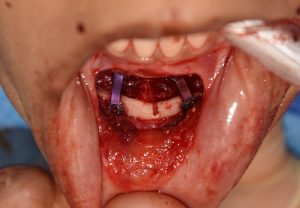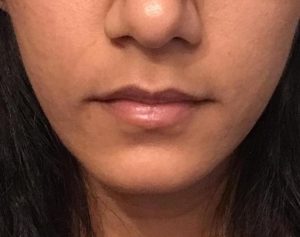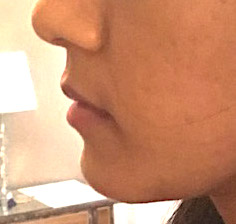Background: Chin augmentation by a siding genioplasty typically focuses on the amount of horizontal augmentation the patient desires. But one advantage of the sliding genioplasty over a chin implant is the ability to also adjust the vertical chin length. It can be used to vertically shorten or lengthen the chin. In doing so, particularly in vertical lengthening, plate fixation is needed to precisely control how much length is achieved. Plate fixation can also be used to shorten the chin and there are multiple ways to do so.
The most obvious method to vertically shorten the chin when it is being advanced is to bent the plate upward. Instead of a horizontal 90 degree step plate (at both the upper and lower screw holes), it changes to a less than 90 degree plate angle at each end. This works for small amounts of vertical changes or when the goal is to prevent any vertical increase as the chin bone comes forward. When done too much, however, the back ends of the chin wings can jut downward creating a palpable bone edge on each side.
Another option is to use an older technique known as the jumping genioplasty. In this method the down fractured chin segment is placed completely in front off the superior chin segment so a complete bony overlap occurs. (jump in front of it) This produces the most significant vertical shortening (the entire height of the down fractured chin segment) but also does a large horizontal advancement. (the thickness of the down fractured chin segment) As a result there is no control over the amount of horizontal advancement.
The third option is known as a wedge ostectomy…
Case Study: This female desired a horizontal chin augmentation of mms but also wanted the chin to be shorter as well.


Case Highlights:
1) While much focus on chin augmentation focuses on the amount of horizontal projection, changes in vertical length can be equally important.
2) In bringing the chin forward by sliding genioplasty vertically shortening the chin can be done with three different methods.
3) The wedge resection vertical shortening chin advancement avoids disrupting the inferior border of the jawline which can be caused by excessive tilting of the chin upward.
Dr. Barry Eppley
Indianapolis, Indiana







